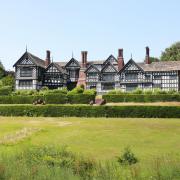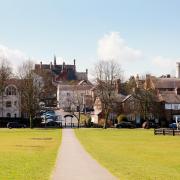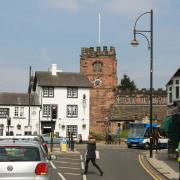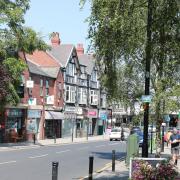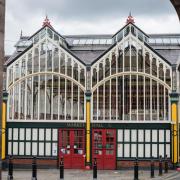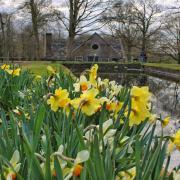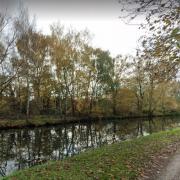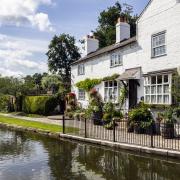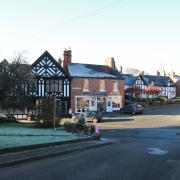Childhood memories of magical Christmasses in Cheshire never left the best-selling author, ‘The Queen of Crime’, Agatha Christie

Although Agatha Christie was born in Torquay and her home from 1938 until her death in 1976 overlooked the River Dart - her fame plays a significant part in the local tourist industry - it was not Devon but Cheadle that fired her imagination as a young girl and set her on course to write 66 novels in a remarkable career lasting more than half a century.
Greenway House is now owned by the National Trust and open to the public and is said to have inspired three of her stories. But Abney Hall, owned by her brother-in-law Sir James Watts, who married her elder sister Margaret - “Madge” - in 1902, cast a spell that Christie never forgot. She was 70 when she recalled the ‘superb and wonderful’ Christmas hospitality at Abney Hall in the foreword of what she described as ‘her book of Christmas fare’.
‘The Adventure of the Christmas Pudding,’ she wrote, ‘is an indulgence of my own, since it recalls to me, very pleasurably, the Christmases of my youth. After my father’s death, my mother and I always spent Christmas with my brother-in-law’s family in the north of England - and what superb Christmases they were for a child to remember! Abney Hall had everything! The garden boasted a waterfall, a stream, and a tunnel under the drive! The Christmas fare was of gargantuan proportions. I was a skinny child, appearing delicate, but actually of robust health and perpetually hungry!
‘The boys of the family and I used to vie with each other as to who could eat most on Christmas Day. Oyster soup and turbot went down without undue zest, but then came roast turkey, boiled turkey and an enormous sirloin of beef. The boys and I had two helpings of all three! We then had plum pudding, mince pies, trifle and every kind of dessert.
‘During the afternoon we ate chocolates solidly. We neither felt, nor were, sick!
How lovely to be eleven years old and greedy! What a day of delight from ‘Stockings’ in bed in the morning, church and all the Christmas hymns, Christmas dinner, presents, and the final lighting of the Christmas tree! And how deep my gratitude to the kind and hospitable hostess who must have worked so hard to make Christmas Day a wonderful memory to me still in my old age. So let me dedicate this book to the memory of Abney Hall, its kindness and its hospitality. And a happy Christmas to all who read this book.”
There is no trace of Christie’s legacy at Abney Hall; no blue plaque. Yet the influence of Watts, Madge and the house itself was to be profound. It was Madge who first challenged Agatha, 11 years her junior, to write a story in the genre of Gaston Leroux’s classic 1908 detective adventure, The Mystery of the Yellow Room – and eight years later, she did.
Her first novel, The Mysterious Affair at Styles was published in 1916, ‘borrowed’ much of its country house setting from Abney Hall and introduced the enduring character of Hercule Poirot to the world of detective fiction. Abney Hall has also been closely linked with other stories. Vanessa Allen, in her 2004 book Agatha Christie: A Readers’ Companion, wrote: “Abney became Agatha’s greatest inspiration for country house life, with all the servants and grandeur which have been woven into her plots. The descriptions of the fictional Styles, Chimneys, Stoneygates and the other houses in her stories are mostly Abney in various forms.”
In her autobiography, published the year after her death, Christie revealed that the basic idea for what avid fans regard as her masterpiece, The Murder of Roger Ackroyd, was first given to her by her brother-in-law James Watts of Abney Hall. In a conversation one day he suggested a novel in which the criminal would be a Dr Watson-type character – the narrator of the story. Agatha considered it to be ‘a remarkably original thought’.
Abney Hall, where she wrote a second book, After the Funeral, is also said to have provided a private sanctuary for Agatha Christie after her eleven-day ‘disappearance’ in 1926, following a nervous breakdown in the wake of her mother’s death and the failure of her marriage. She had gone missing from home, sparking a huge police hunt and media circus, only to turn up, having apparently lost her memory, in a Harrogate hotel.
Abney Hall was sold to the former Cheadle and Gatley urban district council in 1959 for the princely sum of £14,000 and became Cheadle town hall. When local government was reorganised in 1974 and the area became part of the enlarged Stockport Metropolitan Borough, the hall’s historical pieces were removed to the town’s museums. Bought by the property firm Bruntwood in 1983, Abney Hall today houses commercial offices and is set in a public park.




